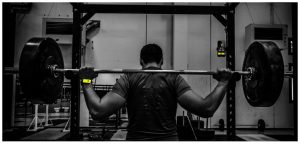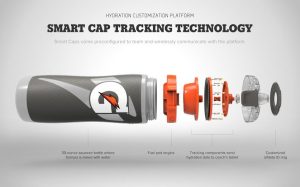 Personal fitness equipment is getting connected in the growing Internet of Things ecosystem (IoT), and fitness enthusiasts are getting more digitally connected well beyond their wristband tracking device.
Personal fitness equipment is getting connected in the growing Internet of Things ecosystem (IoT), and fitness enthusiasts are getting more digitally connected well beyond their wristband tracking device.
, a healthy living portal, looked into fitness consumers’ digital habits and found a health-engaged cohort that’s online in the Web 1.0 world — sharing workout tips in social media communities but not so much product information. Product information is still learned Old School-wise, via product websites, traditional magazines, from peers and word-of-mouth (offline), and trying new gear out at the gym in real time.
This survey was conducted among HellaWella’s readers, who are generally fitness enthusiasts: they tend to exercise two to four times a week, and one-third consider themselves hard-core, working out at least five times a week. Only 16% of HellaWella consumers exercise for a duration of less than 30 minutes at a time, so this survey was firmly focused on fitness folks.
Fitness enthusiast consumers buy personal fitness products to help meet health and wellness goals, including:
- Muscle and strength building, 70%
- Weight loss, 64%
- Cardiovascular improvement, 57%
- Health maintenance and cognitive function, 46%
- Energy, 41%
- Better sleep, 34%.
Personal fitness equipment is emerging for some as a replacement to use at home versus going to a gym: 42% of fitness consumers use personal fitness equipment instead of working out at a gym, and 36% use personal fitness equipment to complement gym workouts. Only 23% of fitness consumers use no personal fitness equipment as part of their exercise routine.
Among digital fitness devices and apps used by fitness consumers, Fitbit ranked first, followed by My Fitness Pal, Garmin, Apple Watch, and Jawbone. 39% of fitness consumers did not use digital tracking devices or apps, so there’s room for digital fitness to grow even among the most hard-core fitness folks.
As for most health consumers, price is the top factor among fitness consumers when making a decision to purchase personal fitness products (among 73% of consumers), closely followed by ease of use (68%), then durability (55%). Size, portability, and design are important for less than one-half of consumers. User ratings and reviews are important to one-third of consumers.
The most popular items consumers fitness consumers have or currently intend to purchase are free weights, yoga mats and blocks, tension bands, cardio equipment, and dumbbells and kettle bells.
More fitness consumers tend to listen to music when working out (71%) than watching TV (49%).
Health Populi’s Hot Points: The fitness industry is at a turning point, where fitness consumers can buy reasonably priced and well-designed products to use at home, outside of the gym. This will be an important option for consumers who live in regions where weather can prevent getting to the gym (say, in snow or ice situations) or when it is too hot outside to run. Craigslist and eBay have emerged as shopping platforms where fitness shoppers can find used equipment like Pilates machines and weights.
 Increasingly, all sorts of fitness equipment will be connected in the IoT ecosystem, from weights to water bottles like the Beast weightlifting program (ThisIsBeast) pictured at the top, and the Gatorade Smart Cap water bottle, shown here. Hydration is key to staying well when working out, and water bottles are the #1 purchased fitness accessory gleaned in this survey (for 82% of fitness consumers).
Increasingly, all sorts of fitness equipment will be connected in the IoT ecosystem, from weights to water bottles like the Beast weightlifting program (ThisIsBeast) pictured at the top, and the Gatorade Smart Cap water bottle, shown here. Hydration is key to staying well when working out, and water bottles are the #1 purchased fitness accessory gleaned in this survey (for 82% of fitness consumers).





 Thank you FeedSpot for
Thank you FeedSpot for